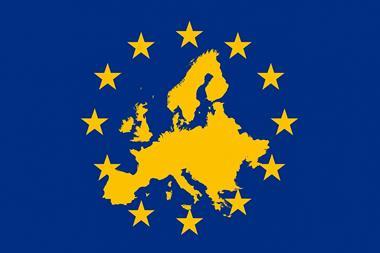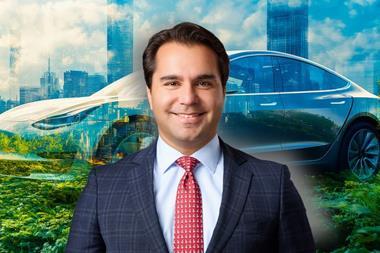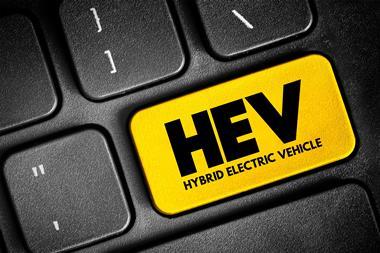Optare build bespoke buses, but the firm faces similar challenges to high volume car manufacturers
 Bespoke isn’t necessarily the term you would associate with mass market public transport, but according to Optare president, Graham Belgum, it’s a key USP for the company’s work with public transport providers. Criteria such as low emissions and running costs, and optimised passenger carrying capability are certainly important, but Belgum also highlights the importance of ‘kerb-appeal’; the design and appearance of the bus is apparently important to the passengers, and also to the bus companies who are Optare’s main customers.
Bespoke isn’t necessarily the term you would associate with mass market public transport, but according to Optare president, Graham Belgum, it’s a key USP for the company’s work with public transport providers. Criteria such as low emissions and running costs, and optimised passenger carrying capability are certainly important, but Belgum also highlights the importance of ‘kerb-appeal’; the design and appearance of the bus is apparently important to the passengers, and also to the bus companies who are Optare’s main customers.
Integral body designAs such, a lot of attention is paid to how the bus looks both on the road and inside. To achieve this ‘bespoke’ offering Optare has had to become very flexible in its production operations. Currently producing 350 vehicles per year, the company offers 75 variations of its product line-up, with multiple smaller variations within the range; as such it has had to adopt very flexible operations at certain stages of the build process. All the variants are built around a basic integral body design, this is a welded stainless steel box section frame, which is strong, durable and lightweight, upon which composite and aluminium panels are attached to give the final body appearance. Visually this design looks anything but basic, and the integral steel frames are supplied by a local specialist fabrication company. The body dimensions have to be flexible so the design is modular allowing for different lengths of vehicle to be easily produced.
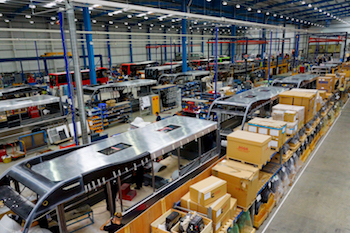
Optare’s UK plant at Sherburn in Elmet has two main areas to the production operation; pre- and post-paint. Interestingly instead of the familiar takt time for each assembly operation each vehicle has a set time in each of the stages of pre- and post-paint (nine hours and six hours respectively). Head of production, Nick Weller explained that due to the variations from one customer order to the next, the work content on individual aspects of the vehicle build could vary greatly. So a simpler solution is to have an overall time in the two main stages of the build process. Weller noted this allows more flexibility when allocating tasks and staff.
Volumes are based on sales, around six buses per week, and there is no automation of any processes and you can see why when you observe the build in progress. One of the most surprising things is the sheer amount of wiring and electronics needed on a modern bus. Public transport vehicles might appear utilitarian and unsophisticated but those built by Optare are anything but. The interior panelling hides miles of cabling and numerous electronic control units that handle everything from lighting to environmental, security and entertainment systems; all of which will vary depending on the customers’ specifications (and budget).
Pre- and post-paint proceduresWorking to a Vehicle Order Instruction (VOI) in the pre-paint section there are 14 stages to each build, following a particular sequence: electrical systems, then mechanical and hydraulic components. Apertures in the frame are filled with sound deadening and thermal insulations materials, all of which is cut and fitted by hand, then covered with very lightweight aluminium and composite panels, riveted and bonded in place to form the outer skin of the vehicle. Parts kitting is used where possible and there are ‘gate’ checks at each stage of the process to maintain quality control.
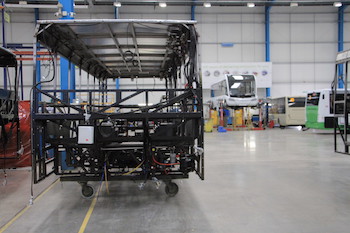 All the buses are built around a basic integral body design; a welded stainless steel box section frame
All the buses are built around a basic integral body design; a welded stainless steel box section frameThe partly assembled bus frames are mounted on simple, adjustable wheeled supports that allow the bodies to be moved manually down the line to the end of the pre-paint section. Now the vehicle will have all the electrical and mechanical systems fitted, as well as all the outer panelling. At this point it’s ready for paint, but as in many automotive manufacturing operations this area is a bottleneck. There are three large Junair paint booths, each capable of accommodating a doubledeck bus. Inside they have wall mounted lifts to carry the painters (paint is applied manually) up and along the length of the bus, however, the process of preparing, masking, priming, painting and drying takes 40 hours for a single colour and 90 hours for three colours.
This is a good example of how this plant can be very flexible; if the paint booths are occupied the waiting vehicle can go to either the lino section (for the fitting of one of the many flooring options) or to have the axles fitted. The vehicle can then be returned to the paintshop when a booth becomes available.
Sub-assembly lines put the axle units together and mount the Allison transmissions to either Mercedes or Cummins engines. One of the big challenges has been adapting the bus bodies to accommodate the additional emission control systems needed to meet Euro 6 standards. Once painted the vehicle goes into the post-paint section where all the glass windows are bonded in; a process that takes another six hours to complete. The interiors and powertrain are then fitted. An increasingly common customer request is the application of vinyl decals, many of which will cover the entire vehicle exterior.
The finished vehicle is inspected at the plant before being taken to Opatre’s own Approved Testing Facility, where a DVSA vehicle examiner carries out an Individual Vehicle Approval, to ensure the vehicle meets the legal standards required for public use. Back at the plant the bus is subjected to a water test and what is called a ‘customer’s eyes’ check. This basically means sitting, standing and moving about the bus as a passenger might, to indentify any function or finish issues before the vehicle is delivered.
Future models and technologies The company has two new projects underway; a new double-deck model (the Metrodecker), which will mark a return to this segment for Optare after an absence of a number of years. Graham Belgum said the plan was to start production of this model in late September. The Metrodecker has been undergoing evaluation by potential customers and is now having final adjustments made to the design. Belgum pointed out it would use the same type of modular, integral body that the singe deck models use, sourced from the same specialist fabrication company. The company is also looking to lead the way developing a pure electric powered bus that will have the range and reliability needed for intensive urban operation. Belgum said that the aim was to reduce the battery requirement by utilising the company’s lightweight integral body structure.
Q&A:Graham Belgum, President Optare Group

AMS: To take your plans forward, how are you managing training and recruitment, given there is a shortage of skilled engineers in the UK?Graham Belgum (GB): I want to cultivate a motivational culture within the plant, where our skilled and experienced employees are drivers for training and developing the new talent within our workforce. This has to be a dynamic process, when every third bus we produce is a different variant. Although we have certain amount of standard operating procedures there are always deviations that require the development engineers to work with the line operatives to ensure that any upgrade or modification is understood and carried out correctly. For example, the change to Euro 6 emission control systems has been a big challenge for our operatives as this sees greater complexity in the vehicle systems. So for the type of business we are, training and development has to be a dynamic process.
AMS: Are you working with technical colleges to find the right people?GB: We do, and we have five apprentices working here at present.
AMS: How important are the new models you are currently developing?GB: The doubledeck segment represents 50% of the market and we haven’t had a presence in that segment for sometime. So if we are grow the business significantly then we have to be present in that part of the market. Having Optare in this segment will give customers another strong OEM to work with and our bespoke approach will be an advantage we feel. We believe EVs [electric vehicles] are going to be the future for the bus market and if the demand in London is for a doubledeck EV then we want the Metrodecker to be a leading choice. It is taking time for the EV market to take off, but I want to get this company in the right position with the right product.
AMS: Do the EV buses require any major changes to your production processes?GB: No, we’ve designed them so it’s a seamless operation from building a conventional ICE bus to an electric powered version. We have taken a very modular approach to our products that allow us the flexibility we need in production. Ideally, I’d like to be producing at least 150 double-decks per year, when we receive an order for 20 buses we will set up a new line and establish a new team from existing operatives and new recruits. This would also see more production tooling being introduced.
Optare is a British manufacturer of urban buses with a modern assembly facility in Yorkshire employing around 350 people. Its range of buses features an integral design and efficient diesel engines, plus an industry-leading choice of electric units utilising the latest low carbon technology.
The plant at Sherburn-in-Elmet, was opened in November 2011 and with 140,000 sq. ft of space, has the capacity to meet both domestic and overseas demand.
The Optare group PLC is part of Ashok Leyland, one of the leading global bus producers, and part of the Hinduja Group.

































